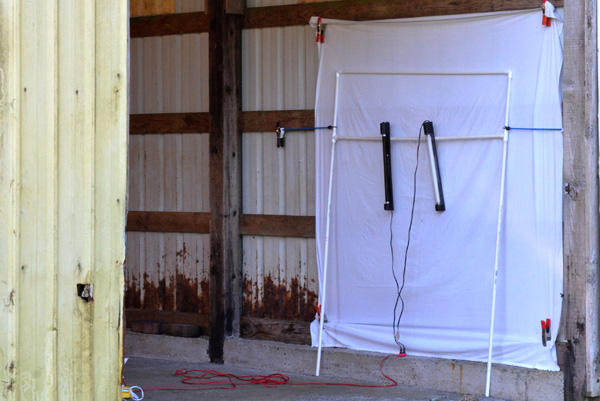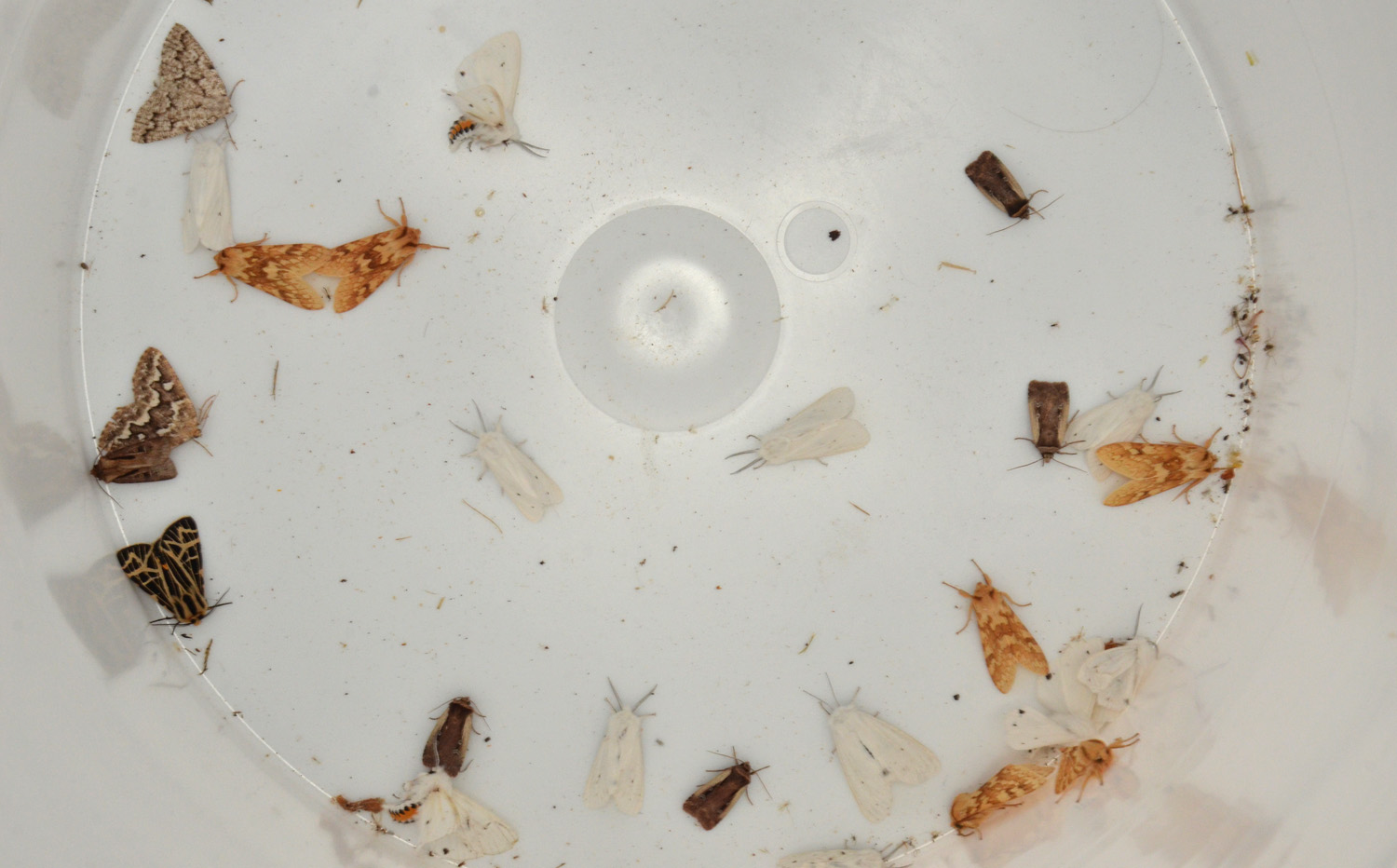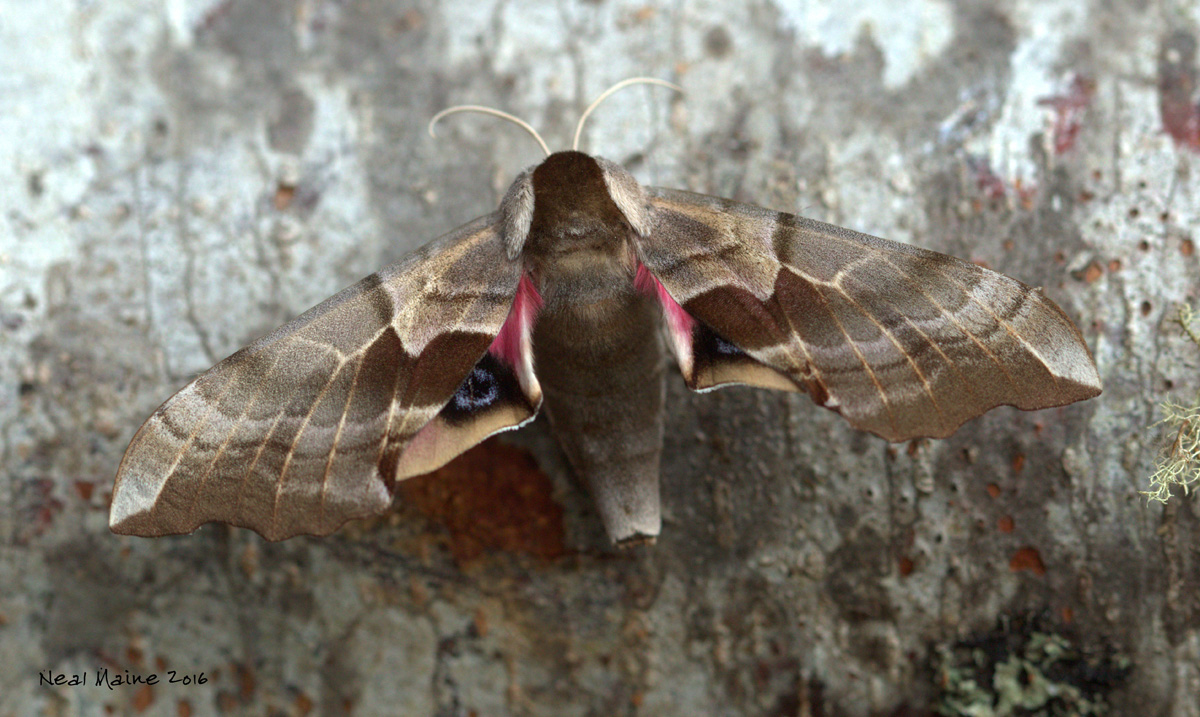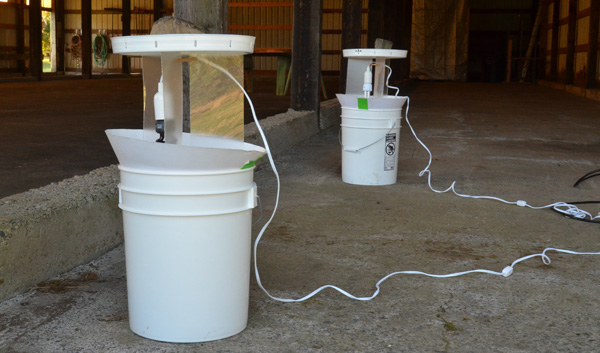
What is mothing? At its simplest, it’s looking for and enjoying moths. According to the website Pacific Northwest Moths, there are more than 1200 moth species in our region. Compare this to birds (about 600 species) or butterflies (about 150 species) and it is clear that mothing is an under-appreciated and rich field of study.
Most moths are nocturnal and are attracted to lights, so the easiest way to observe moths is to find a spot where the right kinds of lights are on all night. Gearhart naturalist and photographer Neal Maine has found that moths are attracted to the neon advertising signs at the RV park store in Gearhart, and I routinely check the lights around the restrooms at the campgrounds at Fort Stevens State Park.
This Polyphemus Moth was photographed coming to a light at Shively Park in Astoria.
But it is possible to bring the moth action to your backyard with a bit of effort and a few simple supplies. Moths like UV light best, so a black light suspended in front of a sheet is enough to attract the attention of neighborhood moths. A black light with the proper fixtures can be purchased at a hardware store for under $25.
 I’ve set up in the barn at Circle Creek Conservation Center on several nights over the last couple of months. I also put out a couple moth traps designed to hold moths that might not otherwise linger until morning.
I’ve set up in the barn at Circle Creek Conservation Center on several nights over the last couple of months. I also put out a couple moth traps designed to hold moths that might not otherwise linger until morning.
On a good night, without too much distracting moonlight, the diversity at just this one site can be astounding.

The white sheet provides a neutral background for clean, identifiable photos, but be sure to check the walls and floor near the sheet.
Neal Maine has been doing a bit of moth-lighting at his house, too. He likes to put out logs from trees for the moths to land on, producing more natural backgrounds for his portraits.

One-eyed sphinx moth in Neal’s backyard
Though moths are certainly the main attraction, the lights may attract other species as well: beetles, flies, aquatic insects …
We will be continuing our mothing efforts out at Circle Creek on weather-cooperating nights and posting the photos at iNaturalist. You can follow along by going to Circle Creek moth photos.

Thank you to naturalist Mike Patterson for this blog post!



Comments